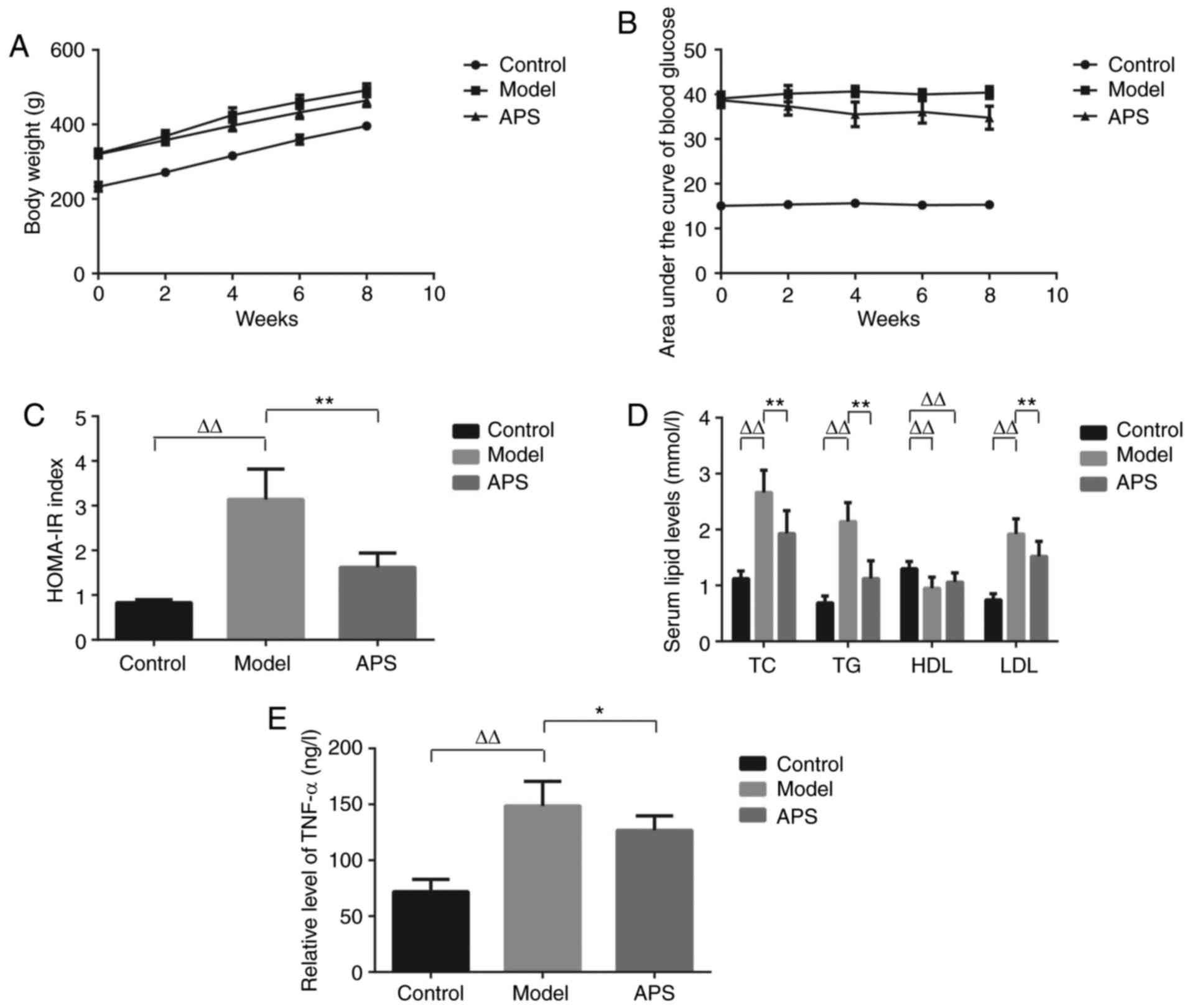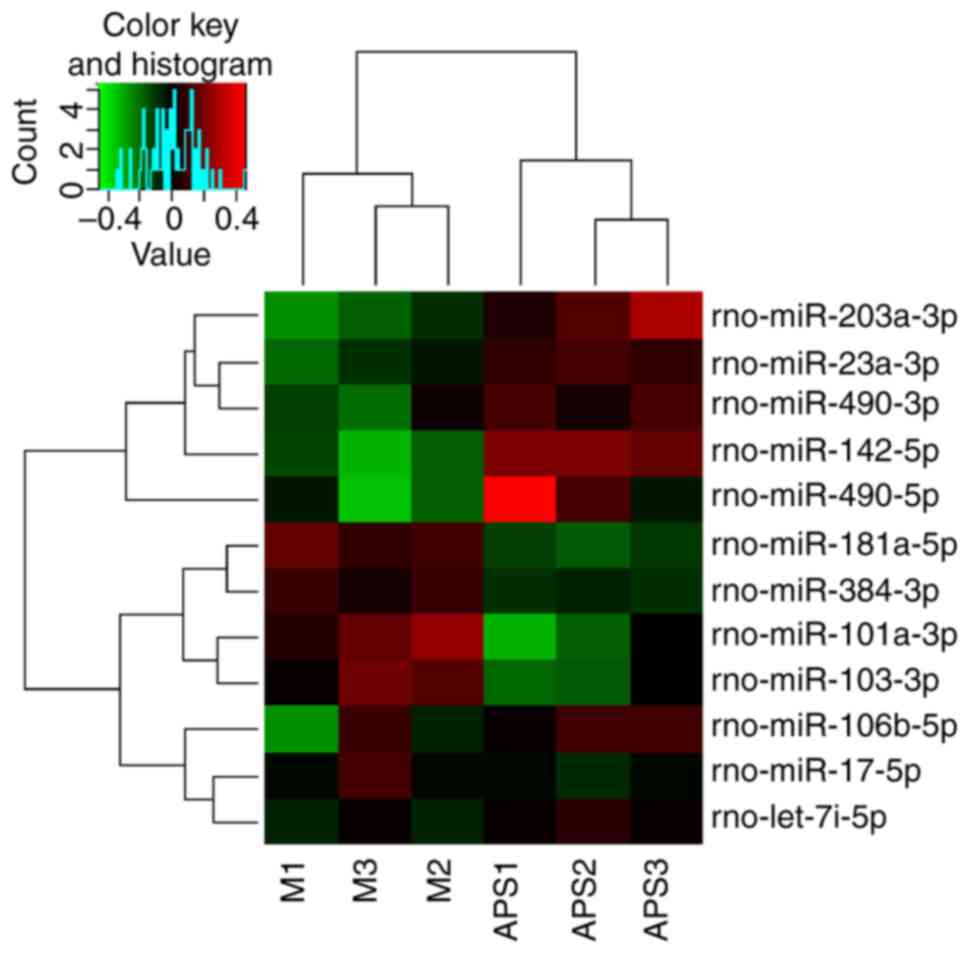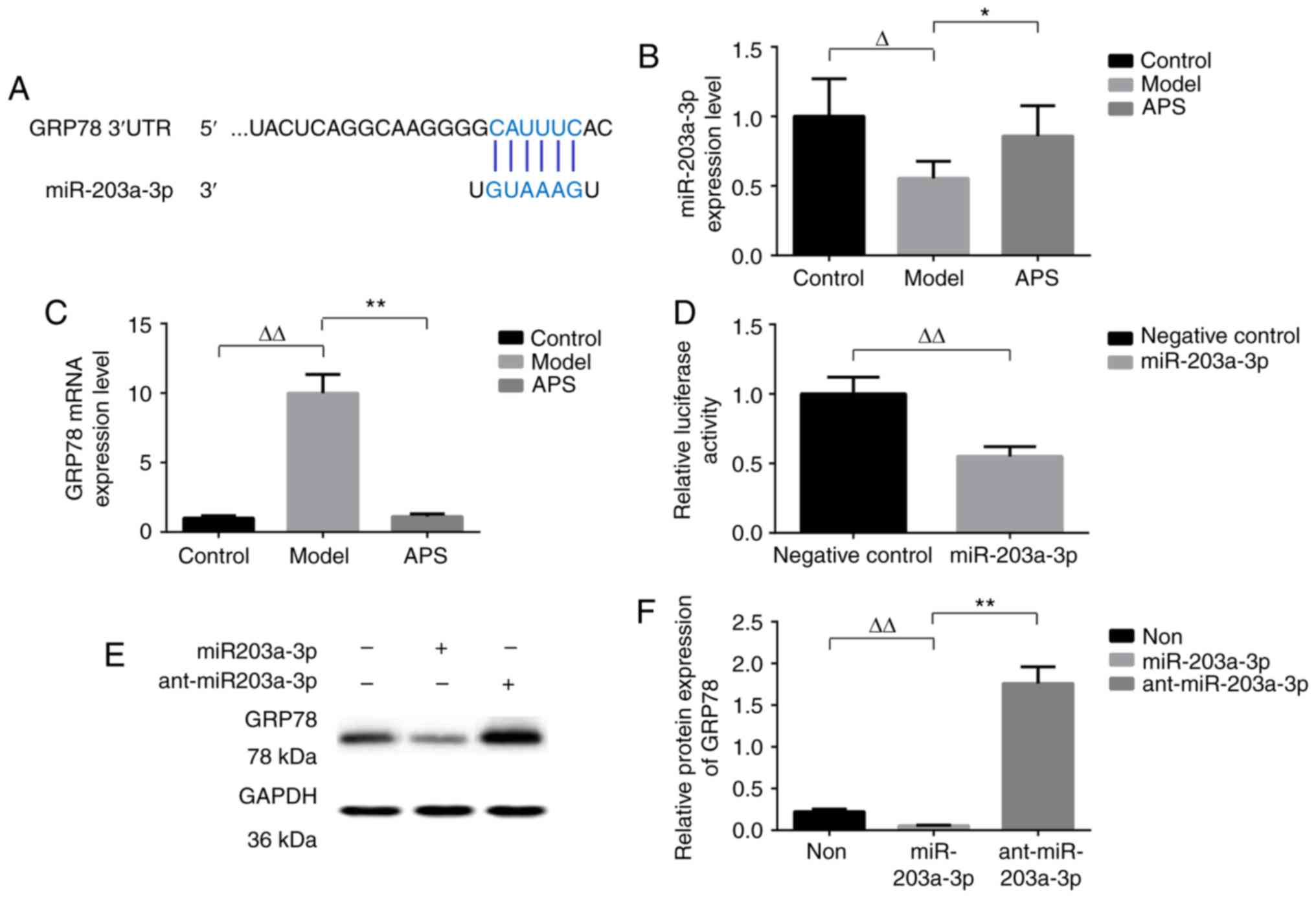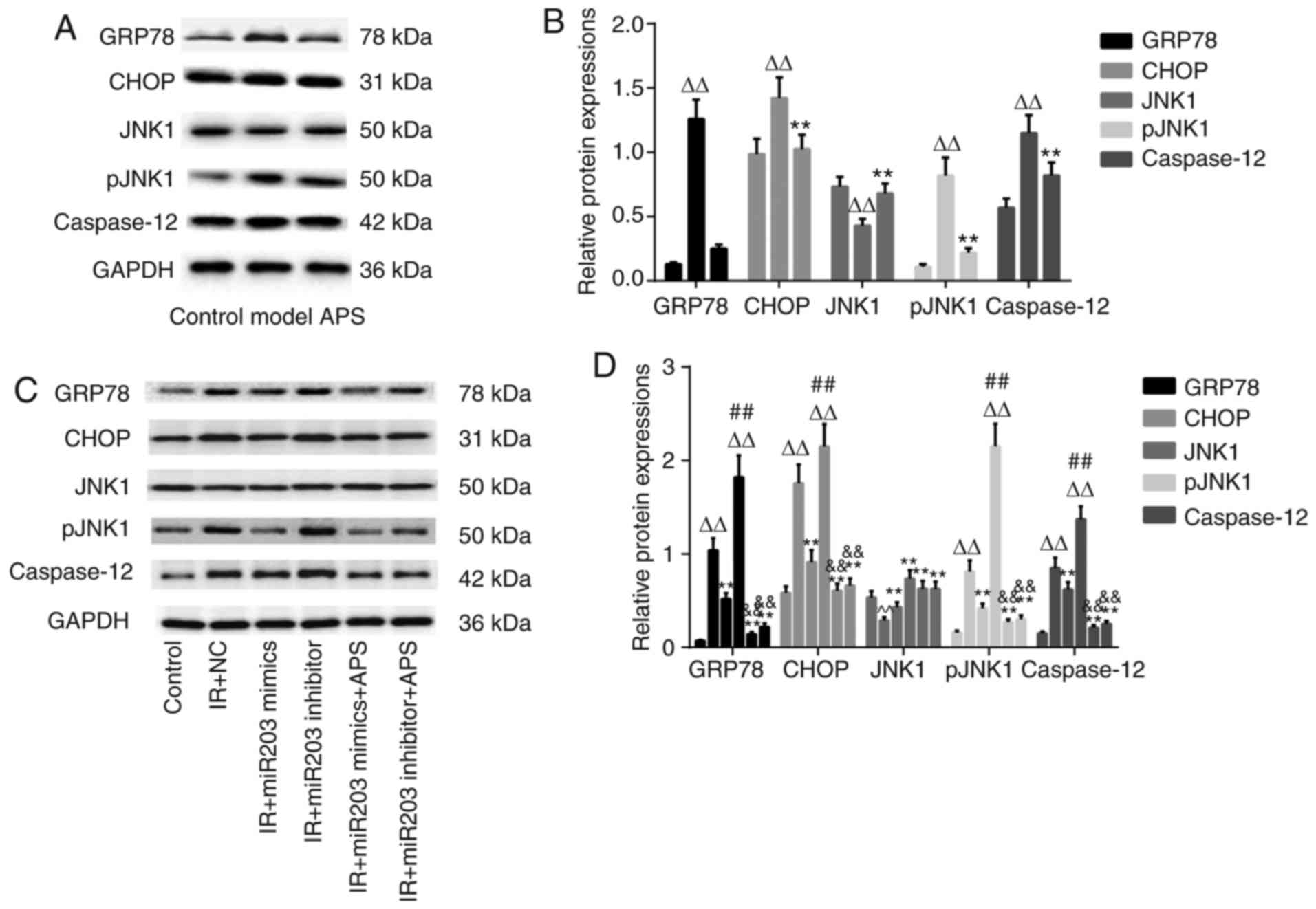|
1
|
Bacon S, Engelbrecht B, Schmid J, Pfeiffer
S, Gallagher R, McCarthy A, Burke M, Concannon C, Prehn JH and
Byrne MM: MicroRNA-224 is readily detectable in urine of
individuals with diabetes mellitus and is a potential indicator of
beta-cell demise. Genes (Basel). 6:399–416. 2015. View Article : Google Scholar :
|
|
2
|
Willeit P, Skroblin P, Kiechl S,
Fernández-Hernando C and Mayr M: Liver microRNAs: Potential
mediators and biomarkers for metabolic and cardiovascular disease?
Eur Heart J. 37:3260–3266. 2016. View Article : Google Scholar :
|
|
3
|
Rawal S, Munasinghe PE, Shindikar A,
Paulin J, Cameron V, Manning P, Williams MJ, Jones GT, Bunton R,
Galvin I and Katare R: Down-regulation of proangiogenic
microRNA-126 and microRNA-132 are early modulators of diabetic
cardiac microangiopathy. Cardiovasc Res. 113:90–101. 2017.
View Article : Google Scholar
|
|
4
|
Chen W, Xia YP, Chen WJ, Yu MH, Li YM and
Ye HY: Improvement of myocardial glycolipid metabolic disorder in
diabetic hamster with Astragalus polysaccharidess treatment.
Mol Biol Rep. 39:7609–7615. 2012. View Article : Google Scholar
|
|
5
|
Li GQ, Kam A, Wong KH, Zhou X, Omar EA,
Alqahtani A, Li KM, Razmovski-Naumovski V and Chan K: Herbal
medicines for the management of diabetes. Adv Exp Med Biol.
771:396–413. 2012.
|
|
6
|
Park J and Jang HJ: Anti-diabetic effects
of natural products an overview of therapeutic strategies. Mol Cell
Toxicol. 13:pp1–20. 2017. View Article : Google Scholar
|
|
7
|
Wagner H and Ulrich-Merzenich G: Towards a
contemporary and evidence-based development of TCM. Evid Ration
Based Res Chin Drugs. 489–516. 2012.
|
|
8
|
Matthews DR, Hosker JP, Rudenski AS,
Naylor BA, Treacher DF and Turner RC: Homeostasis model assessment:
Insulin resistance and beta-cell function from fasting plasma
glucose and insulin concentrations in man. Diabetologia.
28:412–419. 1985. View Article : Google Scholar
|
|
9
|
Fang J, Song XW, Tian J, Chen HY, Li DF,
Wang JF, Ren AJ, Yuan WJ and Lin L: Overexpression of microRNA-378
attenuates ischemia-induced apoptosis by inhibiting caspase-3
expression in cardiac myocytes. Apoptosis. 17:410–423. 2012.
View Article : Google Scholar
|
|
10
|
Yorimitsu T and Klionsky DJ: Autophagy:
Molecular machinery for self-eating. Cell Death Differ. 12 Suppl
2:S1542–S1552. 2005. View Article : Google Scholar
|
|
11
|
Shintani T and Klionsky DJ: Autophagy in
health and disease: A double-edged sword. Science. 306:990–995.
2004. View Article : Google Scholar :
|
|
12
|
Hamasaki M, Noda T, Baba M and Ohsumi Y:
Starvation triggers the delivery of the endoplasmic reticulum to
the vacuole via autophagy in yeast. Traffic. 6:56–65. 2005.
View Article : Google Scholar
|
|
13
|
Yan M, Shen J, Person MD, Kuang X, Lynn
WS, Atlas D and Wong PK: Endoplasmic reticulum stress and unfolded
protein response in Atm-deficient thymocytes and thymic lymphoma
cells are attributable to oxidative stress. Neoplasia. 10:160–167.
2008. View Article : Google Scholar :
|
|
14
|
Galimov A, Hartung A, Trepp R, Mader A,
Flück M, Linke A, Blüher M, Christ E and Krützfeldt J: Growth
hormone replacement therapy regulates microRNA-29a and targets
involved in insulin resistance. J Mol Med (Berl). 93:1369–1379.
2015. View Article : Google Scholar :
|
|
15
|
Pogribny IP, Starlard-Davenport A,
Tryndyak VP, Han T, Ross SA, Rusyn I and Beland FA: Difference in
expression of hepatic microRNAs miR-29c, miR-34a, miR-155, and
miR-200b is associated with strain-specific susceptibility to
dietary nonalcoholic steatohepatitis in mice. Lab Invest.
90:1437–1446. 2010. View Article : Google Scholar :
|
|
16
|
Matsui M and Corey DR: Non-coding RNAs as
drug targets. Nat Rev Drug Discov. 16:167–179. 2017. View Article : Google Scholar
|
|
17
|
Aden DP, Fogel A, Plotkin S, Damjanov I
and Knowles BB: Controlled synthesis of HbsAg in a differentiated
human liver carcinoma-derived cell line. Nature. 282:615–616. 1979.
View Article : Google Scholar
|
|
18
|
Adesina AM, López-Terrada D, Wong KK,
Gunaratne P, Nguyen Y, Pulliam J, Margolin J and Finegold MJ: Gene
expression profiling reveals signatures characterizing histologic
subtypes of hepatoblastoma and global deregulation in cell growth
and survival pathways. Hum Pathol. 40:843–853. 2009. View Article : Google Scholar :
|
|
19
|
López-Terrada D, Cheung SW, Finegold MJ
and Knowles BB: Hep G2 is a hepatoblastoma-derived cell line. Hum
Pathol. 40:1512–1515. 2009. View Article : Google Scholar
|
|
20
|
Paschen W and Mengesdorf T: Cellular
abnormalities linked to endoplasmic reticulum dysfunction in
cerebrovascular disease-therapeutic potential. Pharmacol Ther.
108:362–375. 2005. View Article : Google Scholar
|
|
21
|
Szegezdi E, Logue SE, Gorman AM and Samali
A: Mediators of endoplasmic reticulum stress-induced apoptosis.
EMBO Rep. 7:880–885. 2006. View Article : Google Scholar :
|
|
22
|
Bertolotti A, Zhang Y, Hendershot LM,
Harding HP and Ron D: Dynamic interaction of BiP and ER stress
transducers in the unfolded-protein response. Nat Cell Biol.
2:326–332. 2000. View
Article : Google Scholar
|
|
23
|
Oyadomari S and Mori M: Roles of
CHOP/GADD153 in endoplasmic reticulum stress. Cell Death Differ.
11:381–389. 2004. View Article : Google Scholar
|
|
24
|
Ozcan U, Yilmaz E, Ozcan L, Furuhashi M,
Vaillancourt E, Smith RO, Görgün CZ and Hotamisligil GS: Chemical
chaperones reduce ER stress and restore glucose homeostasis in a
mouse model of type 2 diabetes. Science. 313:1137–1140. 2006.
View Article : Google Scholar :
|
|
25
|
Liu Y, Wang J, Qi SY, Ru LS, Ding C, Wang
HJ, Zhao JS, Li JJ, Li AY and Wang DM: Reduced endoplasmic
reticulum stress might alter the course of heart failure via
caspase-12 and JNK pathways. Can J Cardiol. 30:368–375. 2014.
View Article : Google Scholar
|














